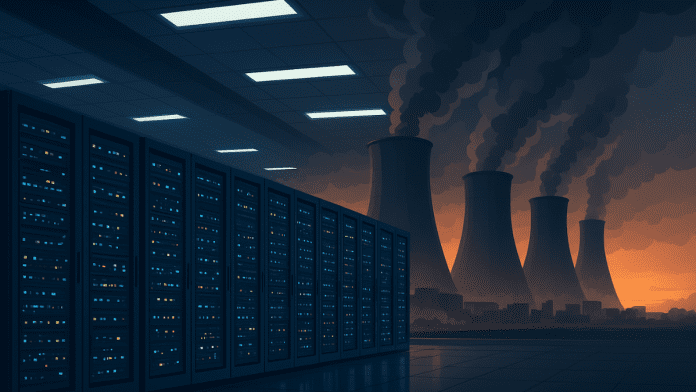🕒 Last updated on October 11, 2025
The United States is seeing a surprising energy shift. Many data centers, the buildings that power the internet and artificial intelligence (AI), are increasingly using coal to produce electricity. This is happening even as the country tries to reduce pollution and fight climate change.
The main reason for this change is high natural gas prices. Gas used to be the preferred fuel for powering data centers. It is cleaner than coal and can be used on-site at these facilities. But now, with gas becoming expensive, companies are turning to coal because it is cheaper and widely available.
Data centers are also growing fast. Experts, including analysts from Jefferies, expect electricity demand from these centers to jump in the next few years, especially during 2026–2028. This rapid growth means power companies must find a way to keep up. In some areas, coal plants are being used more heavily to meet this surge in electricity needs. Recent reports show coal-generated electricity has increased nearly 20% this year compared to last year.
Asian governments maintain coal subsidies as renewable energy projects face investment hurdles
Local Impact of Coal Power
The switch back to coal is not just a number on a chart—it affects local communities. In Omaha, a power company decided not to shut down its coal-burning generators at the North Omaha power plant. These generators were supposed to close to reduce pollution, but the company said it could not risk power shortages for nearby data centers.
Coal burning produces harmful gases and particles. These pollutants can harm the air quality in the area around the power plants. People living nearby may face higher risks of respiratory problems and other health issues. Beyond local health effects, burning coal also adds more greenhouse gases to the atmosphere, which contributes to global warming.
Environmental groups, including Greenpeace, warn that coal is the “dirtiest” form of energy. They stress that relying on coal could slow down efforts to fight climate change and reduce pollution. At the same time, global emissions from data centers are rising. A Morgan Stanley report projects that by 2030, data centers could emit billions of tons of greenhouse gases, mainly due to the growing demand for AI and cloud services.
From fossil fuels to earth’s core — new tech turns geothermal into powerhouse energy
Policy and Energy Choices
Policy decisions also play a role in this shift. Current regulations and approvals for renewable energy, like wind and solar, are limited. Some projects are frozen or delayed, making it harder for data centers to switch to cleaner power.
Many developers choose energy sources that are easiest to access for new facilities. When renewables are not readily available, coal or natural gas becomes the default. Even if a company wants to promise green energy, getting a facility running quickly often comes first.
Government officials have emphasized the need for reliable power to support technology growth. For example, Interior Secretary Doug Burgum highlighted concerns about energy supply affecting the AI race, while Secretary of Energy Chris Wright framed climate change as a side effect of building modern infrastructure. As a result, coal-fired power plants, which were expected to be phased out, are now seeing more use.
The trend shows how economic pressures, rising energy demand, and policy choices are combining to bring coal back into the energy mix for U.S. data centers. This development highlights the challenge of balancing rapid technological growth with environmental goals.

